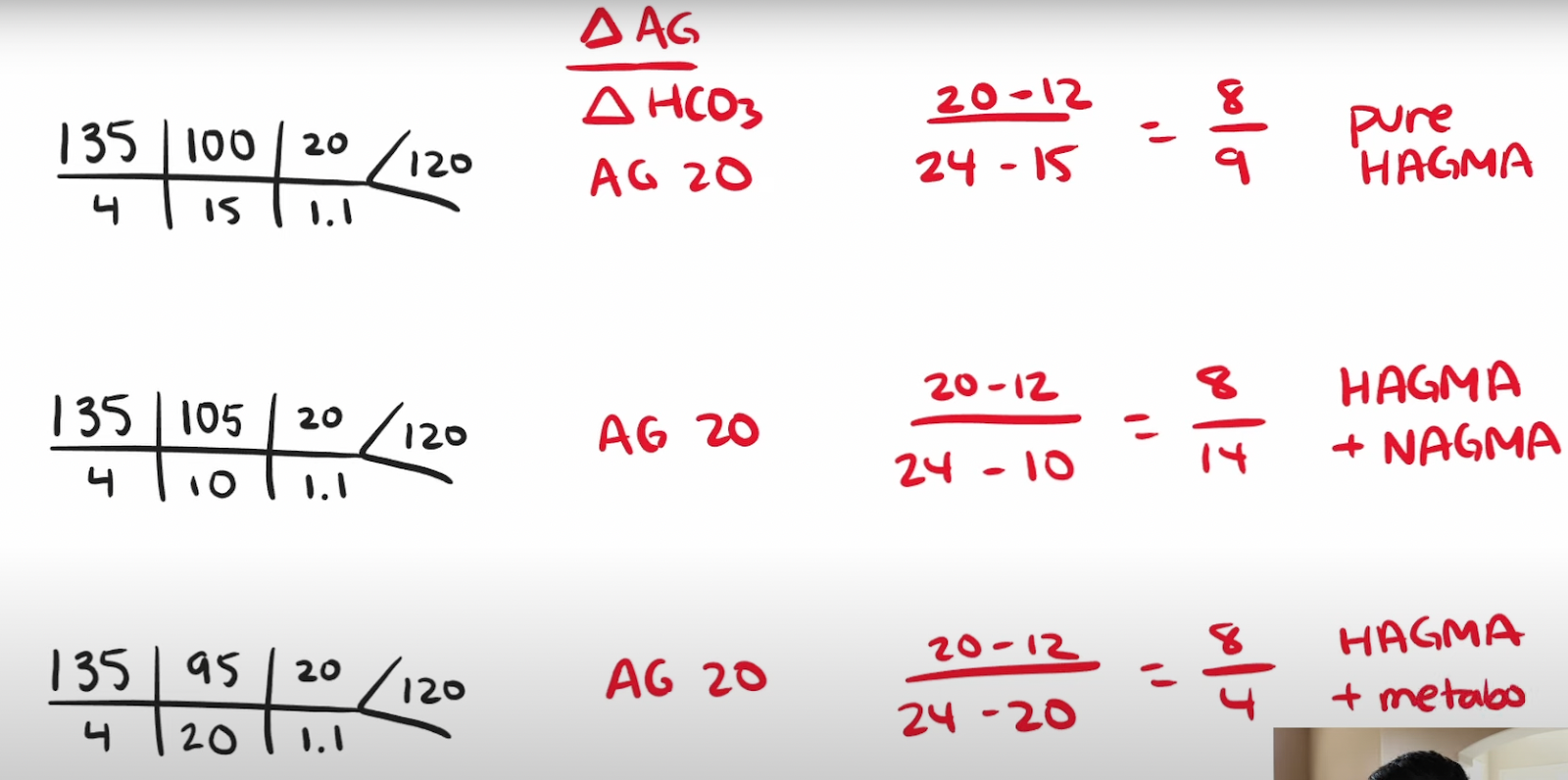Acid Base Balance
Anion gap = Na - (HCO3- + Cl-) + (4-albumin) * 2.5
low albumin means more H+ is ionized and anion gap is actually larger
Low albumin means calcium is not bound
More acidic means more ionized calcium
More alkalotic means less ionized calcium - > tetany
<0.4 Hyperchloremic Anion gap metabolic Acidosis
0.4 - 0.8 High anion gap metabolic acidosis and non anion gap metabolic acidosis
1-2 uncomplicated high anion gap metabolic acidosis
>2 metabolic acidosis with preexisting elevated HCO3 (metabolic alkalosis or respiratory acidosis)
https://www.youtube.com/watch?v=9u7bUhKkeUI
Correcting for albumin is not helpful:
https://emcrit.org/pulmcrit/mythbusting-correcting-the-anion-gap-for-albumin-is-not-helpful/
ethylene glycol, propylene glycol has osmolar gap > 10
compensating for AGMA?
Winter's formula PCO2 = 1.5 * HCO3 + 8 +/- 2
PCO2 30 - 34
AGMA + respiratory acidosis or not
https://www.mdcalc.com/calc/91/serum-osmolality-osmolarity
delta delta is there an additional acid base disturbance on top of anion gap metabolic acidosis. calculate is there anion gap metabolic acidosis
delta-delta = AGMA + NAGMA + metabolic alkalosis??
1 2 3 4 5 Rule
Simple table to calculate metabolic compensation in respiratory acidosis and alkalosis (aka the 1-2-3-4-5 rule)
- Respiratory Acidosis: Increased PaCO2. For every 10mmHg rise should have INCREASE in HCO3 by 1 (acute) or 4 (chronic) as compensation
- Respiratory Alkalosis: Decreased PaCO2. For every 10mmHg rise should have DECREASE in HCO3 by 2 (acute) or 5 (chronic) as compensation,
https://litfl.com/acid-base-disorders/
PaO2 arterial via blood gas
PF ratio
Taco, paco, peco, paco
Dead space = Tidal volme * (PaCo2 - PECO2) / (PaCo2)
normal Tidal volume 500
Normal Dead space 150
Ve = Vt * RR
Va = (Vt - Vd) * RR
How to perform
ABG syringe, for an adult, use a 20-gauge, 2.5-inch needle for a femoral sample and a 22 gauge, 1.25-inch needle for a radial artery puncture, Also 23 gauge and 25 gauge needle can be used. A 23 gauge syringe may be used as it allows faster filling than 25 gauge one, but does not affect more pain to the patient























Comments
Post a Comment